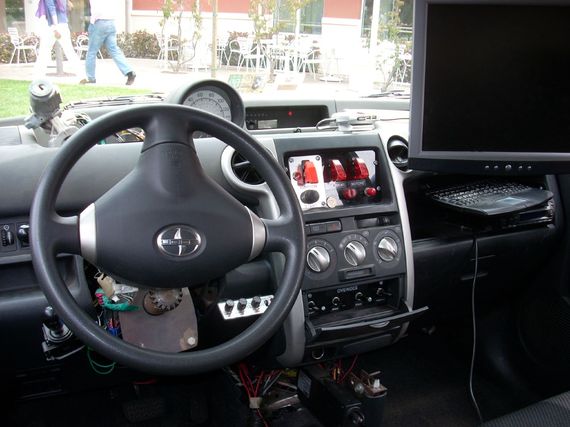We're all familiar with companies like Tesla and how they forever changed the automotive industry through the introduction of electric vehicles. But now, automakers and disruptors alike are exploring the realm of autonomous vehicles--eliminating the need for drivers to operate the vehicle--and are expected to bring them to the road in as little as two years.
The implications of this innovation are enormous. In fact, the driverless car market is predicted to be worth $42 billion by 2025.
As the race to develop driverless cars heightens, an obvious question to consider is, "How will autonomous vehicles impact auto insurance and driver liability?"
This groundbreaking transition from man to machine-led driving will undoubtedly affect how consumers and the auto and insurance industries view auto coverage, but to what extent is still unknown.
Currently, driverless cars are projected to reduce insurance costs by 30%. However, as this market continues to develop, insurers will need to consider potential risks to drivers, passengers and cars, as well as who (or what) is ultimately held responsible. To do this, insurance must recognize change and evolve now.
Insurers need to anticipate the change in how people drive, the way driverless vehicles will function and how liability will look once driver error is taken out of the equation. In addition, the industry will need to be on their toes for potential disrupters, such as Google, developing products for cars that are not addressing these changing needs.
Driverless Cars: The Breakdown
Driverless cars are capable of sensing its surroundings without the input of human interaction. They do this through integrated systems, which provide consumers with a safer and more convenient drive.
As driverless cars are developed, there will be a variety of options to chose from that will enable consumers to select their preferred level of autonomy. Driverless vehicles provide the option for the following autonomy levels:
- Driver only: Vehicle is under human control with the option for automated features, such as cruise control and anti-lock brakes.
- Driver assistance: Provides automation only for steering, acceleration and braking.
- Full autonomy: This level provides the potential for the car to operate and reach its destination without a human present inside the vehicle.
- High autonomy: These vehicles are considered to be prototypes and require human control periodically during a trip. Drivers will be given a warning before the vehicles switch back to manual mode.
- Partial autonomy: Drivers do not have to control steering and accelerating, but must be alert in the event there is an emergency.
Having different levels of autonomy can make it easier for consumers to adapt to this new technology and fit within their desired price range. Prices vary depending on the level of autonomy and included features, but IHS Automotive predicted that autonomous vehicles will add $7,000 to $10,000 to a car's original sticker price.
How Driverless Cars Will Shift Auto Insurance
Nearly every state in the U.S. requires drivers to carry a minimum level of auto insurance to protect themselves and their property, as well as other drivers and passengers.
Why? Because auto insurance is needed to protect individuals in the event of human or mechanical error. But what happens when you take human error out of the equation?
Depending on the level of autonomy, driverless cars may be perceived as being extremely reliable, which means consumers may need a different type of auto insurance to provide protection. Coverage may have to adapt to recognize risks, such as who will assume responsibility of liabilities.
Another question to consider is, "What happens if a driverless car is responsible for accidents?" Will it lead to a higher percentage of product liability claims, since cars themselves will essentially be the drivers?
Driverless cars present the following considerations and implications for common auto policies:
- Personal insurance: With the introduction of self-driving cars, humans inside the vehicles will essentially become passengers. Who will be held responsible for accidents and malfunctions--the driver, manufacturer or both?
- Commercial insurance: Companies such as Uber and Lyft that offer rideshare services may no longer have drivers, raising questions as to how these vehicles will be insured should they encounter an accident while "on duty."
Over the past few years, autonomous vehicles have gone from being a futuristic concept to a realistic and tangible product. Insurers need to recognize the impending change and create improved products and services tailored to the needs of driverless cars.
Interested in reading about the latest insurance and risk management tips, news and trends? If so, subscribe to the INGUARD blog.
